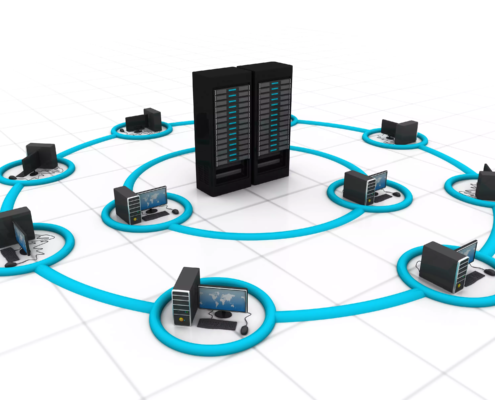 https://www.teamipro.com/wp-content/uploads/2023/08/cloud-computing-effeciency.webp
800
1200
Pat Anunciacion
https://www.teamipro.com/wp-content/uploads/2023/07/IPRO.png
Pat Anunciacion2023-08-25 15:36:112023-11-29 16:47:20How Does Cloud Computing Improve Business Efficiency
https://www.teamipro.com/wp-content/uploads/2023/08/cloud-computing-effeciency.webp
800
1200
Pat Anunciacion
https://www.teamipro.com/wp-content/uploads/2023/07/IPRO.png
Pat Anunciacion2023-08-25 15:36:112023-11-29 16:47:20How Does Cloud Computing Improve Business EfficiencyAn IT emergency can strike any business at any time, disrupting daily operations and causing significant setbacks. From unexpected system crashes to cyber-attacks, these urgent tech issues can affect every part of a company. For many businesses, technology drives productivity, customer service, and even revenue. When an IT emergency happens, it can halt all of these critical functions, putting the company at risk.
The impact of an IT emergency goes beyond just technical inconvenience. Every minute of downtime costs money and can damage a company’s reputation. Businesses need to act fast, as delays can lead to lost data, frustrated customers, and potentially, long-term harm. That’s why companies like IPro must understand the threats and be ready to respond.
In this guide, we’ll explore what companies need to know about handling IT emergencies. From recognizing the signs to taking immediate action, being prepared can make all the difference in minimizing damage and keeping business running smoothly
What is an IT Emergency?
An IT emergency is a sudden, unexpected problem with a company’s technology that requires immediate action. These emergencies can disrupt daily operations, put sensitive data at risk, and even bring business to a halt. IT emergencies can happen to any business, large or small, and often occur without warning.
Types of IT Emergencies
There are many types of IT emergencies, each with its own set of challenges. Some of the most common types include:
- Data Breaches: A data breach occurs when unauthorized users access sensitive information. This type of IT emergency can expose customer data, company records, and other private information. Data breaches not only threaten security but can also damage a company’s reputation and lead to legal issues.
- Network Outages: A network outage happens when a company’s network is down, preventing employees from accessing the internet, files, or shared systems. This type of IT emergency can stop all operations, delay communication, and disrupt workflow. Network outages often require swift emergency IT response to get things back up and running.
- System Failures: System failures occur when key software or hardware stops working. This can happen due to outdated software, hardware malfunctions, or even power issues. For example, if a company’s server crashes, it could lose critical data. Handling these failures requires efficient IT incident management to prevent data loss and prolonged downtime.
Common Causes of IT Emergencies
An IT emergency can stem from various sources, each posing unique risks to a business. Understanding the causes helps in preventing these emergencies and planning for a quick response. Here are some common reasons why IT emergencies occur and how they can impact your business.
1. Cyber-Attacks
Cyber-attacks are a leading cause of IT emergencies. Hackers use tactics like phishing, ransomware, and malware to infiltrate company systems. These attacks can lock important files, steal sensitive data, or even shut down entire networks. Businesses in any industry are targets, but those with weak security measures are especially vulnerable.
A cyber-attack can lead to serious IT downtime and requires immediate IT troubleshooting to limit the damage. Companies, like those needing endpoint security in Dallas, should have strong protection measures in place. Without these, they risk not only financial losses but also a hit to their reputation.
2. Hardware Failures
Every piece of hardware, from servers to workstations, has a lifespan. Over time, hardware can wear out, leading to unexpected failures. When a server or critical device fails, it can cause an IT emergency by stopping employees from accessing important files or applications.
Hardware failures are unpredictable and often require swift action. Businesses should consider regular hardware checks and upgrades to reduce the chances of failure. A company with a reliable backup and disaster recovery plan in Dallas can handle these emergencies better, as they’ll have backups to restore lost data quickly.
3. Human Errors
Human errors are another common cause of IT emergencies. Employees may accidentally delete important files, click on suspicious links, or misconfigured systems. Even a simple mistake, like sending sensitive information to the wrong person, can turn into a serious IT emergency.
Training employees to recognize risks and follow best practices is essential. By focusing on education, businesses can reduce errors that lead to emergencies. Regular security awareness training can be a proactive approach to avoiding human errors that disrupt systems.
4. Software Malfunctions
Software is the backbone of most modern business operations. However, software can malfunction for various reasons. Bugs in the code, compatibility issues, or outdated versions can all lead to an IT emergency. When software fails, it may lead to IT downtime, disrupting workflows and delaying important tasks.
Companies should perform regular software updates and ensure compatibility across systems. Additionally, having a reliable IT troubleshooting team ready to diagnose and fix these issues can help avoid long periods of downtime.
5. Natural Disasters
Natural disasters like floods, storms, or earthquakes can also trigger an IT emergency. These events can damage hardware, disrupt power, and prevent access to company facilities. While natural disasters are unpredictable, companies can prepare by creating a backup and disaster recovery plan. This ensures they have copies of their data stored in secure, offsite locations.
Recognizing the Signs of an IT Emergency
An IT emergency can disrupt business operations and lead to significant losses. Identifying the early signs is crucial for prompt action. Here are common indicators that your business may be facing an IT emergency:
1. Slow System Response
When computers or applications respond sluggishly, it may signal underlying issues. Causes can include:
- Overloaded Servers: Excessive data or user requests can strain servers.
- Malware Infections: Malicious software can consume system resources.
- Hardware Failures: Aging or damaged components may slow performance.
Addressing slow system responses promptly can prevent further complications.
2. Data Loss
Unexpected loss of files or information is a serious concern. Data loss can result from:
- Accidental Deletion: Human errors leading to unintentional file removal.
- Hardware Malfunctions: Failing storage devices causing data corruption.
- Cyber-Attacks: Hackers deleting or encrypting data for ransom.
Implementing regular backups and a robust disaster recovery plan is essential. For businesses in Dallas, consider backup and disaster recovery solutions to safeguard your data.
3. Network Disruptions
Frequent network outages or connectivity issues can halt business operations. Potential causes include:
- Router Failures: Malfunctioning network devices disrupting connections.
- Cybersecurity Breaches: Unauthorized access leading to network instability.
- Internet Service Provider (ISP) Issues: External problems affecting connectivity.
Regular network monitoring and maintenance can help identify and resolve these issues promptly.
4. Unusual Pop-Up Messages
Unexpected pop-ups or error messages may indicate malware infections or system errors. These can compromise system integrity and security. Employing endpoint security solutions can help detect and prevent such threats.
5. Unauthorized Access Attempts
Alerts about login attempts from unknown sources suggest potential security breaches. This could lead to data theft or system compromise. Implementing strong access controls and monitoring can mitigate these risks.
6. Frequent System Crashes
Regular system crashes or application failures disrupt productivity and may indicate deeper issues, such as:
- Software Conflicts: Incompatible programs causing instability.
- Insufficient Resources: Lack of memory or processing power.
- Hardware Problems: Defective components leading to failures.
Regular system audits and updates can help maintain stability.
7. Unusual Network Traffic
A sudden spike in network activity can signal a cyber-attack, such as a Distributed Denial of Service (DDoS) attack. Monitoring network traffic patterns is vital for early detection and response.
8. Employee Reports of Anomalies
Staff noticing irregularities, like missing files or unresponsive applications, can be the first to spot issues. Encouraging prompt reporting and having an IT support team ready to investigate can prevent escalation.
Immediate Steps to Take During an IT Emergency
An IT emergency can strike without warning, but knowing the right steps can reduce its impact. Here’s a step-by-step guide on what businesses should do to handle an IT emergency effectively.
1. Assess the Situation
The first step in an IT emergency is to assess what’s happening. Determine the extent of the issue and identify which systems or data are affected. Gather as much information as possible to understand the problem.
Example Questions to Ask:
- Is it a network outage, a data breach, or a system failure?
- Which systems or files are impacted?
- Are any users or employees reporting similar issues?
Quick assessment helps with emergency IT response planning, ensuring the right steps are taken to minimize damage.
2. Isolate the Problem
Once the issue is identified, take steps to isolate it. For example, disconnect affected devices from the network to prevent a potential virus or malware from spreading. If a server is compromised, shut down access temporarily.
Isolation protects other parts of the system from being affected and limits the spread of the issue. For companies relying on endpoint security in Dallas, this is a crucial step in containing threats.
3. Inform Key Personnel and Teams
Alert essential staff and IT team members about the IT emergency. Informing the right people quickly helps coordinate an effective response. If the emergency affects customer-facing services, consider notifying customers to manage expectations and prevent confusion.
4. Initiate IT Security Response
Activate your IT security response plan. This should involve IT personnel trained to handle the specific issue, whether it’s a data breach, network problem, or hardware failure. Teams should follow established protocols to investigate and resolve the problem efficiently.
A strong emergency IT response can include steps like scanning systems for malware, restoring backup files, and repairing hardware. Businesses with a backup and disaster recovery plan in Dallas can quickly restore essential data if needed.
5. Document Every Step
Throughout the IT emergency, document each step taken. Record actions performed, affected systems, and any unusual findings. This information helps with understanding what went wrong and can be valuable for preventing similar emergencies in the future.
Documenting steps also ensures accountability and helps the IT team review the incident later for improvements.
6. Restore and Test Systems
After resolving the immediate issue, it’s time to restore systems and test them to ensure everything works properly. Verify that all data is intact, security settings are active, and no residual issues remain.
Testing is essential for confirming that the IT emergency is truly over. For added security, perform a system-wide scan to catch any remaining threats. Testing should also include checking network stability, application functions, and access controls.
7. Review and Update Emergency Plans
Once systems are stable, conduct a review to learn from the IT emergency. Identify what worked, what didn’t, and how processes can improve. Update your IT security response plan to address any weaknesses uncovered during the emergency.
A well-documented review can strengthen your response plan, making your business better prepared for future emergencies. It’s an essential step for building resilience and enhancing your team’s confidence in handling IT issues.
Importance of Professional IT Support for Emergencies
In an IT emergency, businesses need quick and effective solutions to minimize damage. Partnering with professional IT support or a managed service provider offers several advantages, ensuring enterprises have expert help when they need it most. Here’s why having an emergency IT team on your side is essential for handling crises effectively.
1. Immediate Access to Expertise
During an IT emergency, time is of the essence. IT professionals bring specialized skills and experience to respond to issues quickly. They know how to assess problems accurately, isolate threats, and implement fixes. This level of expertise is invaluable in situations like cyber-attacks, network outages, or data loss.
With professional IT support, businesses can trust that the emergency is handled by experts trained to manage complex IT issues. Their experience in emergency IT response ensures that problems are addressed thoroughly, minimizing downtime.
2. Around-the-Clock Monitoring and Support
Many IT emergencies occur outside regular business hours, which can delay response times if a company relies only on in-house teams. Professional IT support providers often offer 24/7 monitoring and support, catching potential issues before they escalate. This continuous monitoring helps identify vulnerabilities and detect signs of trouble early.
For example, if your business relies on endpoint security in Dallas, a professional team will monitor your network for unusual activity. This proactive approach can prevent an emergency, reducing risks and protecting valuable data.
3. Faster Emergency IT Response Times
In an IT emergency, a delayed response can increase costs and damage. Managed service providers have established protocols for handling emergencies, which means they can respond faster than in-house teams. With a dedicated emergency IT response team, they can act immediately, following a proven process that minimizes downtime.
These professionals are equipped with the tools and resources needed to address issues quickly. They can restore systems, secure data, and ensure that operations resume as soon as possible.
4. Access to Advanced Tools and Technology
Professional IT support teams often use advanced tools and technologies that businesses may not have in-house. These include high-level security software, monitoring systems, and backup solutions. During an IT emergency, these resources can make a significant difference in the speed and success of the response.
For instance, businesses with backup and disaster recovery plans in Dallas can rely on managed IT providers to restore lost data quickly. Access to these tools means faster, more efficient resolutions, reducing the impact of the emergency on business operations.
5. Reduced Costs and Improved Efficiency
While hiring professional IT support may seem like an added expense, it often saves businesses money in the long run. In-house IT teams may lack the resources or training to handle major emergencies, leading to extended downtime or costly fixes. Managed service providers specialize in emergency responses, meaning they can address issues more efficiently.
By minimizing downtime and preventing recurring issues, professional IT support reduces the overall cost of IT emergencies. Companies benefit from improved efficiency, as systems are restored quickly and securely.
6. Tailored Emergency IT Response Plans
Managed IT providers work with businesses to create customized emergency IT response plans. These plans outline specific steps to take in the event of an IT emergency, ensuring that both the provider and the business know what to do. Having a tailored plan in place reduces confusion and improves coordination during a crisis.
A professional IT team can also train employees on basic response steps, helping them understand how to report issues quickly. This partnership prepares the entire organization to respond effectively, strengthening overall IT security.
Conclusion
Preparing for an IT emergency is essential for every business. With the right plans and support in place, you can protect your data, prevent downtime, and keep operations running smoothly. Don’t wait for a crisis to find out if your business is ready.
At IPRO, we provide expert assistance to help you handle any IT challenges that come your way. From proactive planning to immediate response, we’re here to support your needs. Contact us today to learn how we can help secure your business and respond effectively to any IT emergency.
 https://www.teamipro.com/wp-content/uploads/2023/08/cloud-computing-effeciency.webp
800
1200
Pat Anunciacion
https://www.teamipro.com/wp-content/uploads/2023/07/IPRO.png
Pat Anunciacion2023-08-25 15:36:112023-11-29 16:47:20How Does Cloud Computing Improve Business Efficiency
https://www.teamipro.com/wp-content/uploads/2023/08/cloud-computing-effeciency.webp
800
1200
Pat Anunciacion
https://www.teamipro.com/wp-content/uploads/2023/07/IPRO.png
Pat Anunciacion2023-08-25 15:36:112023-11-29 16:47:20How Does Cloud Computing Improve Business Efficiency
Network Monitoring Stops Problems in Their Tracks








